Cushions, candlesticks, and napkin rings with a history: the entrepreneurial initiatives that won the design competition.

Last week, the first edition of the SEAmos Creativos: Collaborative Seedbed program was closed and awarded at the Colombian Global Women's Corporation (CMMC) booth at the Eva Fair. For several months, this initiative brought together microentrepreneurs and creatives in a co-creation process to develop products with social, environmental, and economic impact.
“Led by the CMMC, SEAmos Creativos demonstrates that purposeful design can be a powerful tool for generating social, economic, and environmental transformation. Through shared value among microentrepreneurs and creatives, the creation of products with identity, sustainability, and market potential was promoted ,” explains Ana Lucía Jiménez, Director of Social Performance at the CMMC.
During the event, three teams were recognized for their work creating prototypes based on three challenges: SEA + Viable; SEA + Livable; and SEA + Equitable. Based on these criteria, each group developed a product that was evaluated by a panel of experts in design, sustainability, and productive development.
The winning pairs for each challenge were:
- SEA+ Livable: Bernalarte (on Instagram as @bernalarte.co) + Handy (@handy.design)
- SEA+ Viable: Mandi with Love (@mandi_con_amor) + Pespunte (@pespunte.co)
- SEA+ Equitable: We Leave a Mark Foundation (@fundaciondejamoshuella) + Fauna Flora (@faunaflora.faunaflora).
The duo's spokespersons spoke with EL TIEMPO about their proposal and the impact they hope their work will have.
The Sanjuanero from Tolima Inspired by the Sanjuanero of Tolima, Bernalarte and Handy developed a set of wooden candlesticks, made using responsible processes , that evoke the movement and cultural tradition of dance.
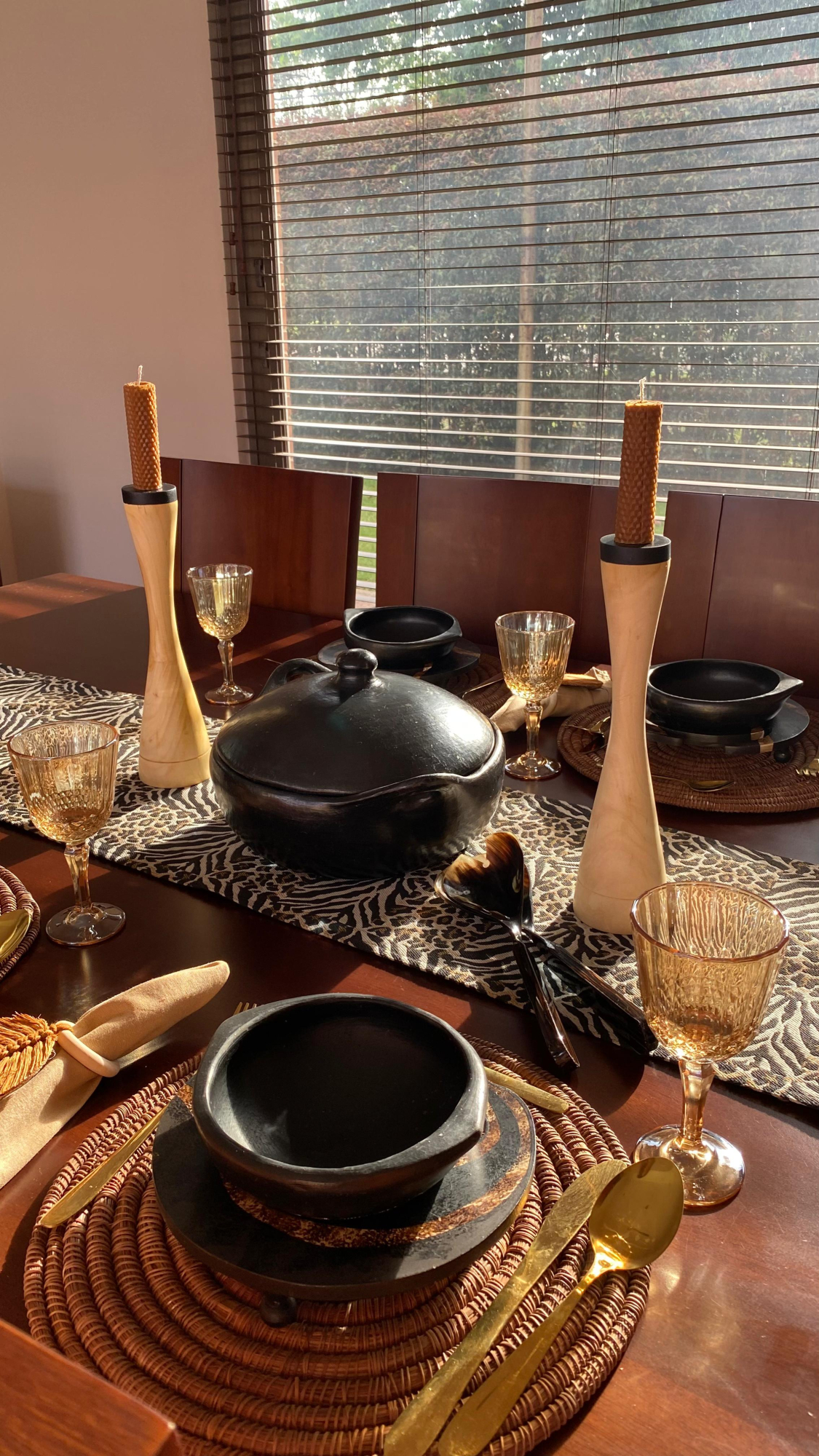
The process complemented and enriched both ventures. Photo: Courtesy.
Nicolás Falla, Handy's spokesperson, explained that the workshop was intended to foster co-creation between the duos, complementing and enriching each other's ventures. Through the fusion of wood art from both Handy and Bernalarte, along with a creative process, they arrived at the final product: a set of candlesticks crafted from oak from the department of Huila.
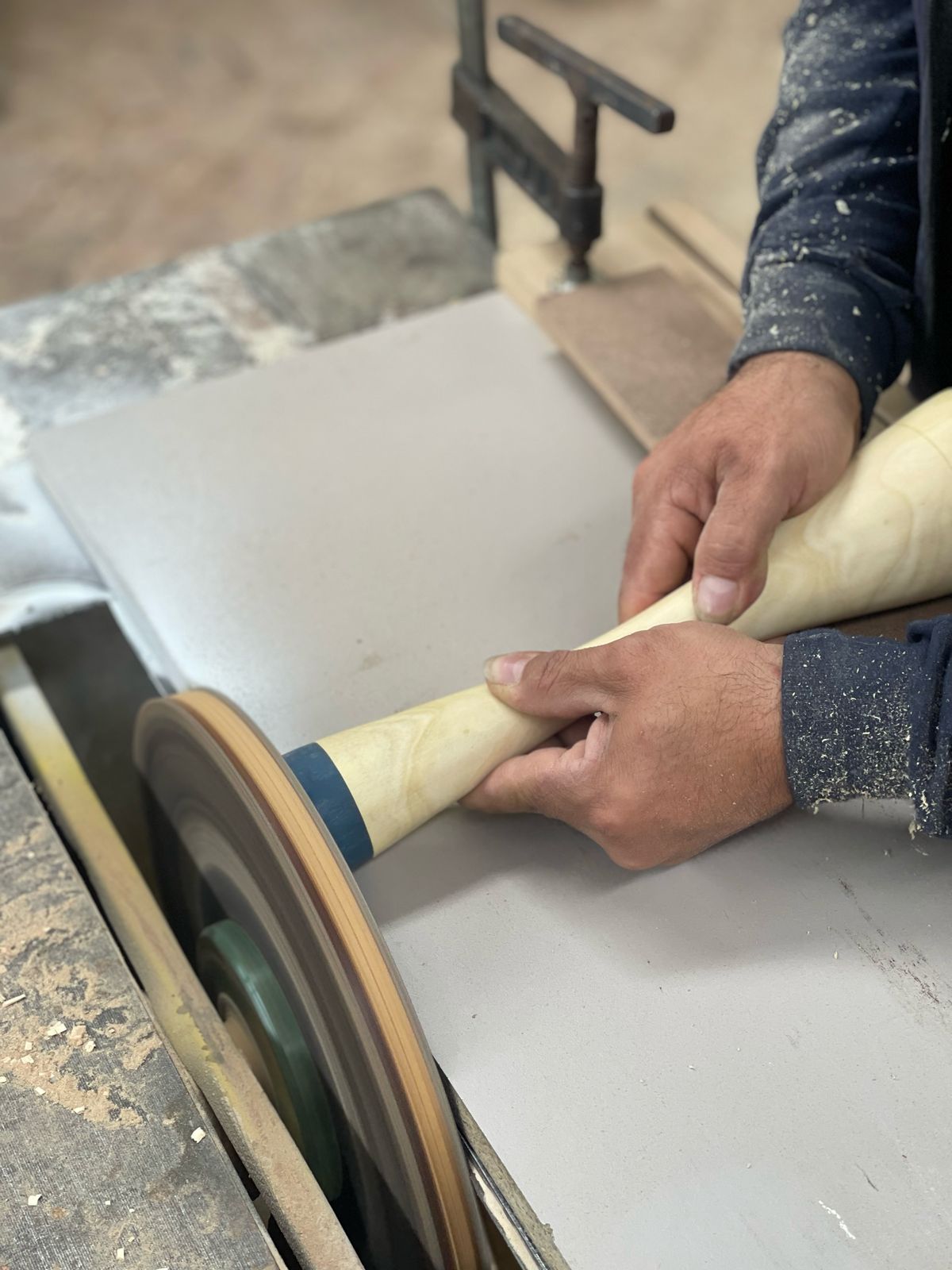
Its goal is to protect the trade of woodturners. Photo: Courtesy.
“We're from Neiva and have family in Huila. We were looking for something in common, for example, a love for the woodturning trade,” Falla adds. He also points out that this trade is on the verge of extinction due to new technologies like 3D printing, and his goal is precisely to preserve these techniques. “We want to continue believing in craftsmanship, and that is our social impact.”
Regarding the challenges of arriving at the final product, Claudia Bernal emphasizes that getting three people to agree—because she also works with her sister, Mónica Bernal—and solidifying the ideas within the budget and time available was complex.
“Craftsmanship isn't highly valued because people aren't aware that it's a handmade product,” says Bernal. Falla adds: “ Craftsmanship is so important that it sustains entire communities. Families pass this knowledge down from generation to generation with respect and make a living from it.”
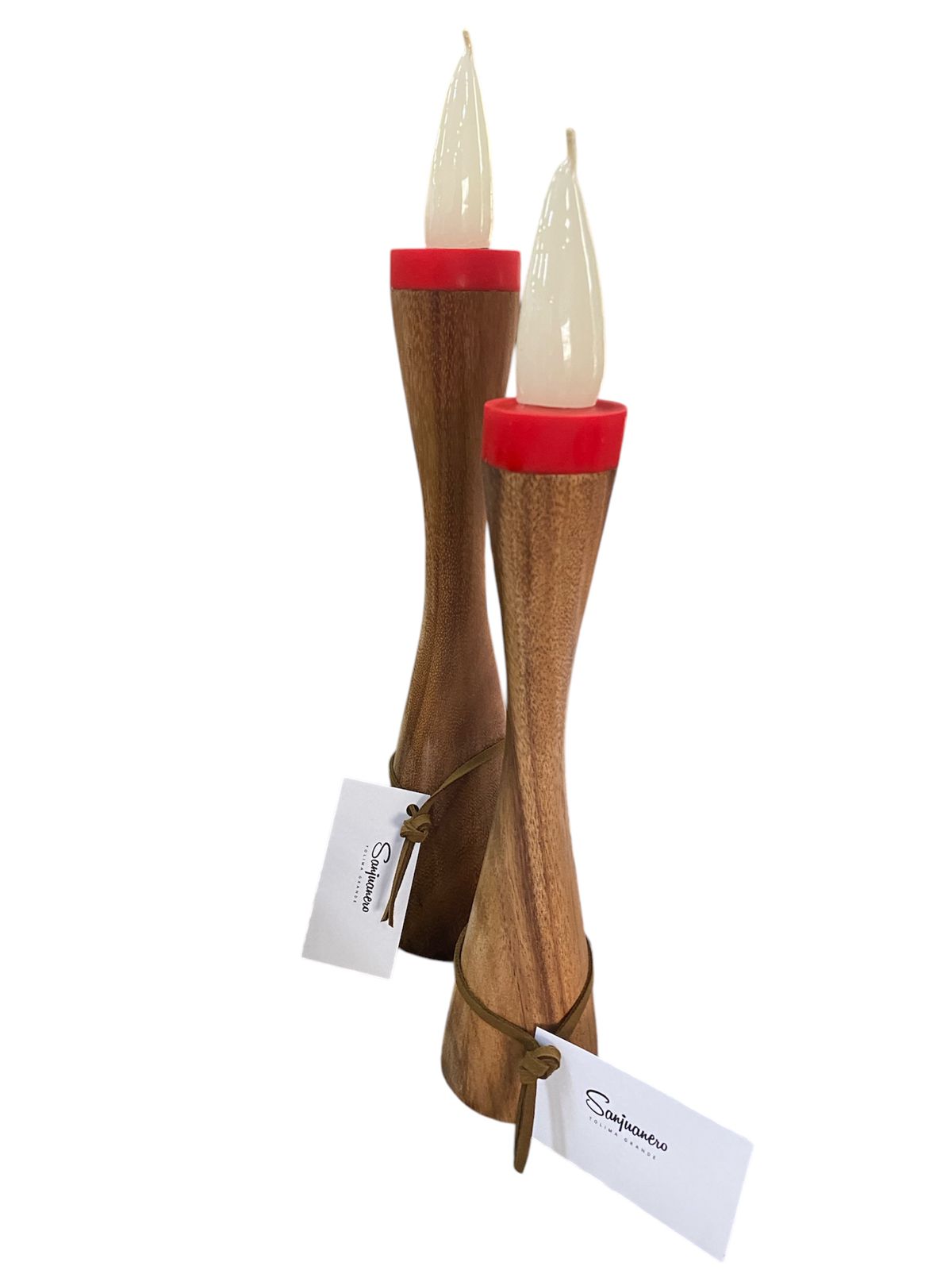
Condelabros by Bernalarte (on Instagram as @bernalarte.co) and Handy (@handy.design). Photo: Courtesy.
This duo created a line of woven napkin rings that fuses Mandi con Amor's macramé with the Pespunte loom technique , achieving an aesthetically pleasing, functional piece with great market potential.
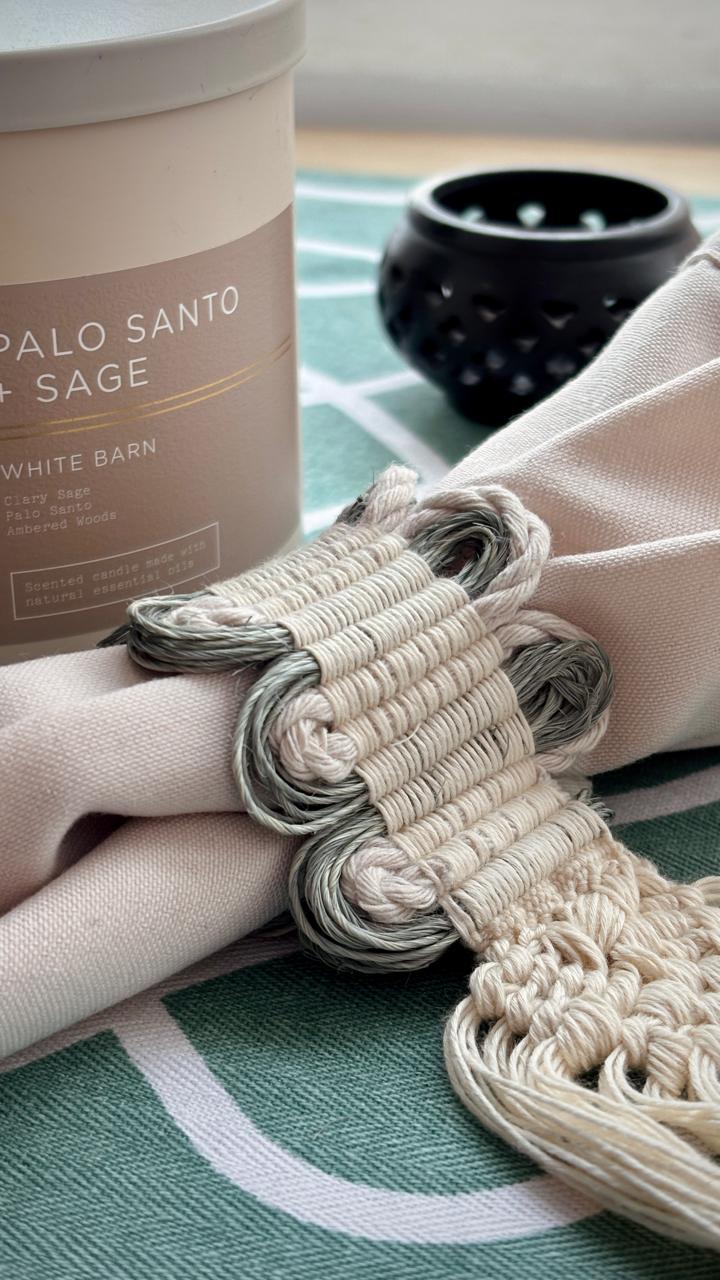
This product combines Mandi con Amor's macramé with the loom stitching technique. Photo: Courtesy.
Before arriving at the final result, the duo held meetings to review the products they could develop, production times, and the necessary materials. Natalia Quiñones, one of the members of Pespunte, recounts that they shared unused fabric scraps with Martha Sarmiento, representative of Mandi con Amor. These were used to make the macramé knots. From that exploration, the napkin rings emerged.
“Martha shared with us a lot about her father's experience—who has Alzheimer's—with the senses and how this is conceptualized. She also shared how we can approach them through the senses, while also working with raw materials of natural origin, ” Quiñones says.
At Pespunte, where they normally make large tapestries, one of the challenges was changing the format. Jennibeth Iguarán highlights the creative process involved in developing an equally interesting product. One of the ultimate achievements was precisely creating a line they had never considered. “We developed a product that was also very interesting from a technical standpoint. Additionally, changing the format helped us creatively think of new options we can explore in the future,” Iguarán explains.
The three spokespersons emphasize that the union was very harmonious, not only from the design perspective, but also from the technical perspective of handling the fabrics. " For us, the craft is about creating with our hands and slightly shifting the mindset that it's the designer who creates and someone else who crafts, because when you create with your hands, the experience is different. In a way, we elevate the craft and open up spaces so that this is also possible in the urban environment," Quiñones concludes.
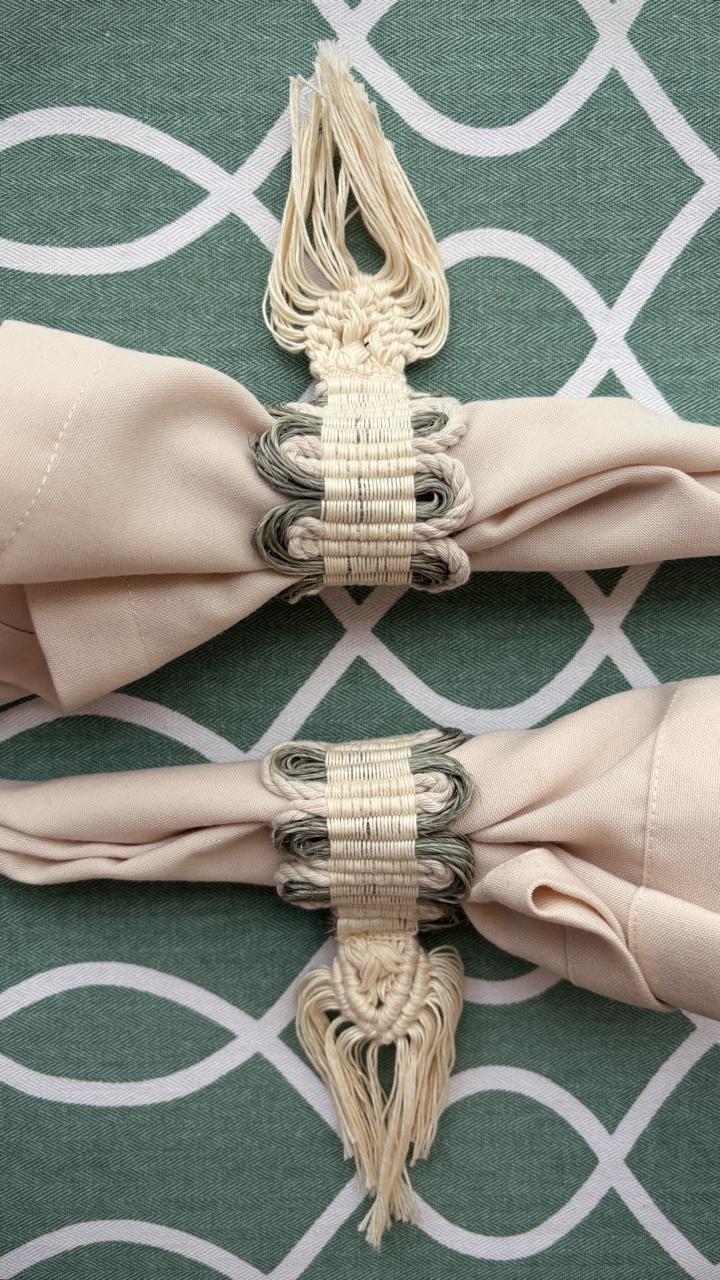
The duo aims to enhance artisanal techniques. Photo: Courtesy.
The Dejamos Huella Foundation, which works with women who have been victims of physical and psychological violence, and Fauna y Flora designed unique cushions made with recycled fabrics, collaborative weavings , and graphic elements that highlight Colombian biodiversity, integrating women's knowledge, art, and sustainability.
The duo combined the foundation's work with reclaimed fabric, the tapestry, and the work of the women involved in the project. " We chose orchids because the foundation works with Colombian and Venezuelan women. We wanted to tell a story that didn't separate them, but rather united them. So, based on research, we selected 10 orchids that live in both territories and made the cushions, merging our knowledge," says Alejandra, creator of Fauna y Flora.
"The women who work with us want to move forward. They need both psychological and social support, and it's truly wonderful to work with them. Our goal is for them to know that there are reasons to live, that they are fascinating ," says Julio Pomareda, an instructor at the foundation.
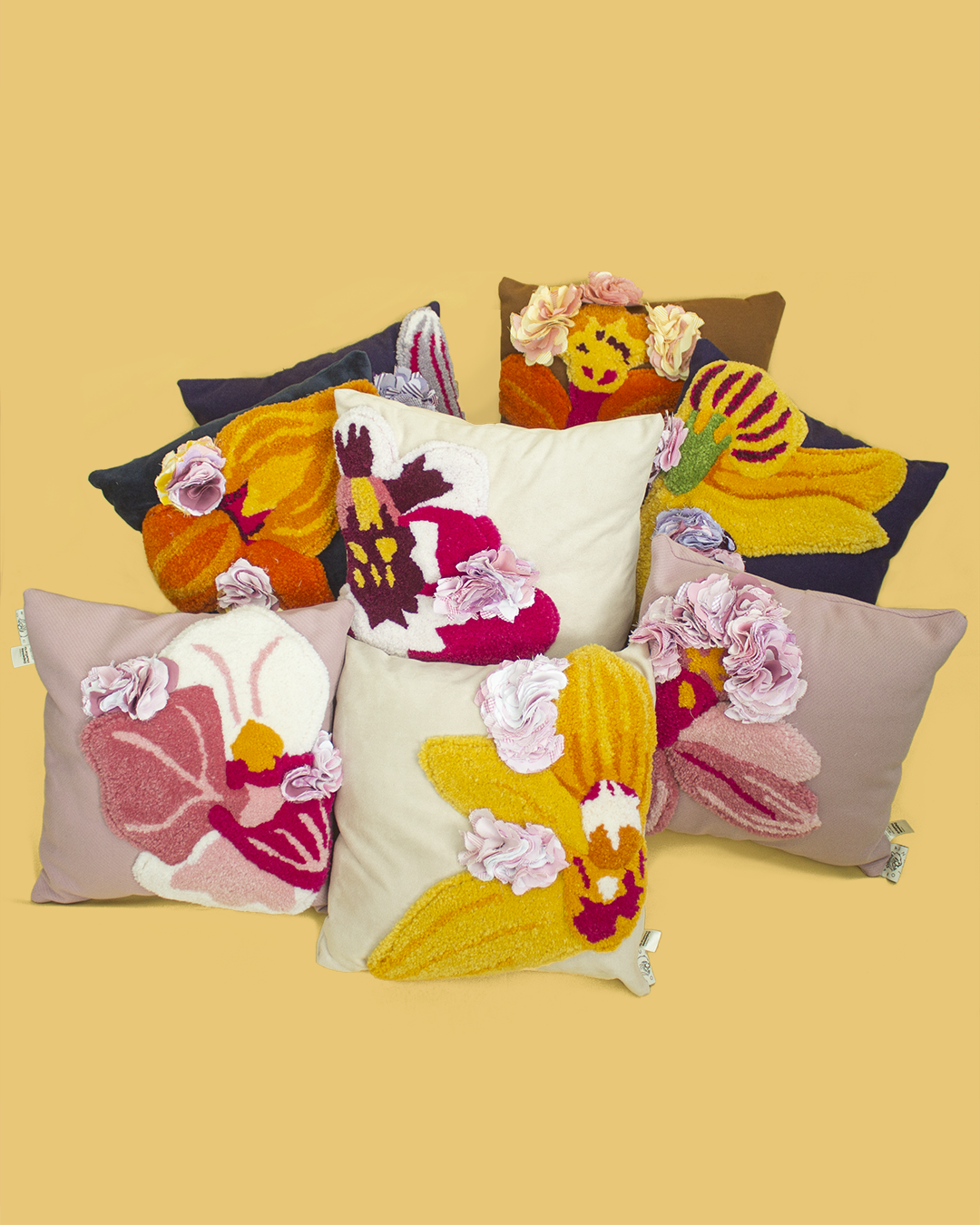
Cushions from the Dejamos Huella and Flora Fauna Foundation. Photo: Courtesy.
In the future, the foundation wants to continue working with Alejandra on other projects, such as recovering denim and tailoring fabric to create unique garments from these scraps and combining them with the animals and plants of Fauna and Flora.
ANGIE RODRÍGUEZ - TRENDS EDITORIAL - @ANGS0614
eltiempo





